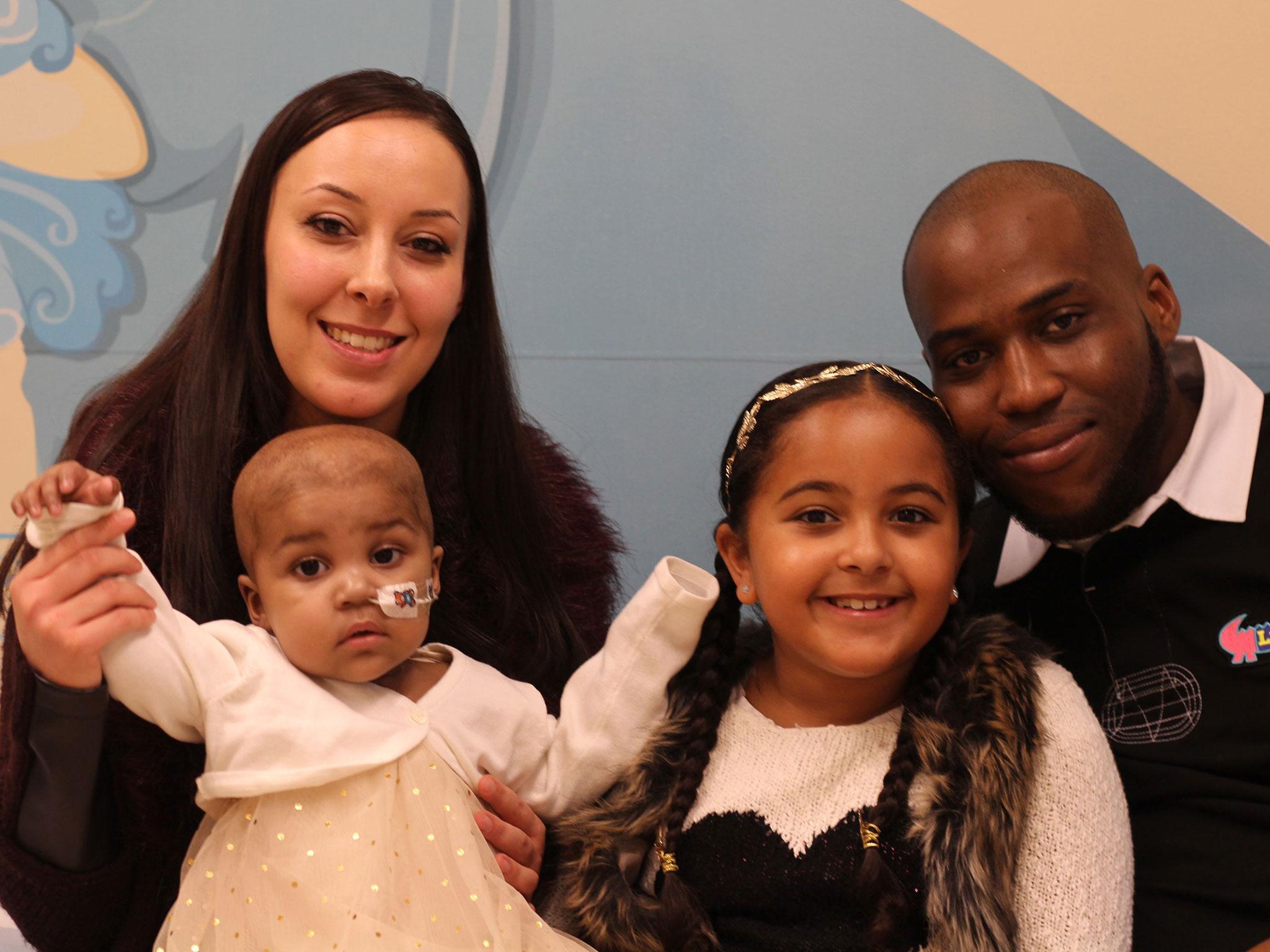Layla Richards: One-year-old girl becomes world's first person to receive therapy to cure 'incurable' cancer
Layla Richards had the treatment at Great Ormond Street Hospital in central London

A one-year-old girl has become the first person in the world to receive a “designer” immune cell therapy to cure her “incurable” cancer.
Layla Richards had the treatment – a potential breakthrough for leukaemia and other cancers – at Great Ormond Street Hospital (Gosh) in central London.
Doctors described her response to the therapy as “almost a miracle” and “staggering” after her family was told there were no other options left. Experts said it “could represent a huge step forward” in treating leukaemia.
Scientists used a new gene-editing technique to manipulate immune cells to fight the disease. The therapy has previously been tested only on mice in the laboratory.
Following the treatment, Layla spent months in isolation but is now free of cancer and recovering well at home.
Her mother, Lisa Foley, 27, a dental receptionist from north London, said: “We didn’t want to accept palliative care and so we asked the doctors to try anything for our daughter, even if it hadn’t been tried before.”
Layla was diagnosed with cancer at just 14 weeks old after going off her milk and developing a fast heartbeat. A blood test confirmed Layla had an aggressive type of acute lymphoblastic leukaemia, the most common form of childhood leukaemia.
She had several rounds of chemotherapy to try to get rid of the cancer and was then given a bone marrow transplant. Seven weeks later, the family was told that Layla’s cancer had returned.
Doctors told Layla’s parents that there was nothing left that could cure Layla, and suggested palliative end-of-life care. But Ms Foley said she did not want to “give up on her daughter”. The family was then told of a very recent and experimental treatment being developed by experts at the hospital.
The treatment involves using “molecular scissors” to edit genes and create designer immune cells programmed to hunt out and kill drug-resistant leukaemia.
Only one vial of the treatment was available for Layla. An emergency ethics committee meeting was called to seek immediate approval for the treatment.
Layla’s father, Ashleigh Richards, 30, a driver, said: “It was scary to think that the treatment had never been used in a human before but, even with the risks, there was no doubt that we wanted to try the treatment. She was sick and in lots of pain so we had to do something.”
Layla was given a small 1ml infusion of genetically engineered cells, known as Ucart19 cells. She developed a rash, as doctors expected, but otherwise seemed well.
A few weeks later, Mr Richards called Ms Foley. “He said that the consultants had been in with results of the treatment and told me to sit down.
“I thought it was bad news but then he said, ‘It’s worked,’ and I just cried happy tears.”
Mr Richards said: “Even though she is well at the moment, we still don’t know what the future holds.
“She will still have monthly bone marrow checks for now and might be on some medicines for the rest of her life.”
Ms Foley said: “I consider ourselves lucky that we were in the right place at the right time to get a vial of these cells. Hopefully Layla will stay well and lots more children can be helped with this new treatment.”
Professor Paul Veys, the director of bone marrow transplant at Gosh and Layla’s head doctor, said: “As this was the first time that the treatment had been used, we didn’t know if or when it would work and so we were over the moon when it did.
“Her leukaemia was so aggressive that such a response is almost a miracle.”
Waseem Qasim, a professor of cell and gene therapy at the UCL Institute of Child Health and a consultant immunologist at Gosh, said: “We have only used this treatment on one very strong little girl, and we have to be cautious about claiming that this will be a suitable treatment option for all children.
“But, this is a landmark in the use of new gene-engineering technology and the effects for this child have been staggering. If replicated, it could represent a huge step forward in treating leukaemia and other cancers.”
Subscribe to Independent Premium to bookmark this article
Want to bookmark your favourite articles and stories to read or reference later? Start your Independent Premium subscription today.

Join our commenting forum
Join thought-provoking conversations, follow other Independent readers and see their replies